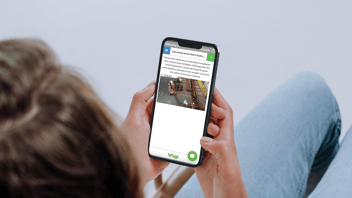In many industrial and construction environments, loud noise is part of the job — but permanent hearing loss doesn’t have to be. Every year, more than 22 million U.S. workers are exposed to hazardous noise levels according to OSHA, yet this damage is 100% preventable with proper hearing protection and training.
Our free Hearing Protection Toolbox Talk gives you everything you need to raise awareness, demonstrate correct use of PPE, and help your crew stay safe — and hearing strong — for years to come.
Download: Free Hearing Protection 101 Toolbox Talk
Why Hearing Protection Matters
Noise-induced hearing loss is one of the most common occupational illnesses — and once it happens, it’s permanent. Loud sounds damage the tiny hair cells in your inner ear that help you hear. Once those cells die, they never grow back. Even moderate noise exposure, such as 85 decibels over an eight-hour shift, can start causing damage without any pain or warning signs.
Common warning signs include:
-
Having to shout to talk to someone just a few feet away
-
Ringing or buzzing in the ears after work (tinnitus)
-
Muffled or distant sounds when leaving the jobsite
If any of these sound familiar, it’s time to act.
Understanding OSHA’s Noise Exposure Limits
Employers have a legal responsibility to protect workers from excessive noise.
-
General Industry (29 CFR 1910.95): A Hearing Conservation Program is required when exposure reaches or exceeds 85 dBA averaged over eight hours.
-
Construction (29 CFR 1926.52/.101): OSHA’s permissible exposure limit (PEL) is 90 dBA, and impact noises must never exceed 140 dB.
That means hearing protection must be provided, training must be given, and regular noise monitoring and annual audiometric testing are essential.
Choosing the Right Hearing Protection Device
Not all hearing protection is created equal — and overprotection can be just as risky as underprotection. The goal is to reduce harmful noise without cutting out critical sounds like alarms, vehicle movement, or coworker communication.
The three main types of hearing protection include:
-
Earplugs: Foam or silicone inserts that fit inside the ear canal.
-
Earmuffs: Cushioned cups that fully cover the ears, often attached to helmets.
-
Canal Caps: Soft-tipped protectors held in place by a lightweight band.
Always check the Noise Reduction Rating (NRR) to ensure the right level of protection for your environment, and make sure the fit is comfortable with other PPE like safety glasses and hard hats.
Proper Fit Makes All the Difference
Even the best PPE won’t protect your hearing if it’s not worn correctly.
-
Earplugs: Roll into a small cone, pull the ear up and back, insert deeply, and check for a snug seal.
-
Earmuffs: Adjust the headband evenly, remove obstructions like hair or straps, and check for full contact around the ear throughout your shift.
In extremely noisy areas (above 100 dBA), double protection — wearing both earplugs and earmuffs — is recommended to block additional sound exposure.
Maintenance and Replacement
Dirty or damaged hearing protection doesn’t just lose effectiveness — it can also lead to ear infections and discomfort.
-
Clean reusable plugs and earmuff cushions with mild soap and water.
-
Replace foam plugs after each use.
-
Inspect gear daily for cracks, hardening, or loss of elasticity.
Taking a few minutes to maintain your PPE can mean a lifetime of better hearing.
Make Hearing Safety Part of Your Culture
Every reminder matters. Encourage your crew to wear hearing protection consistently, report noisy conditions, and treat their hearing as priceless. Once it’s gone, it’s gone — but together, we can make sure that doesn’t happen.
📥 Download the Free Hearing Protection Toolbox Talk
Give your team a ready-to-use training resource that covers everything from OSHA requirements to proper PPE use.
Download your free copy today and use it in your next safety huddle or weekly meeting to help your team take one simple, powerful step toward lasting hearing health.
Download: Free Hearing Protection 101 Toolbox Talk

.jpg?width=425&length=350&name=blog%20image%20(4).jpg)



Leave a Comment